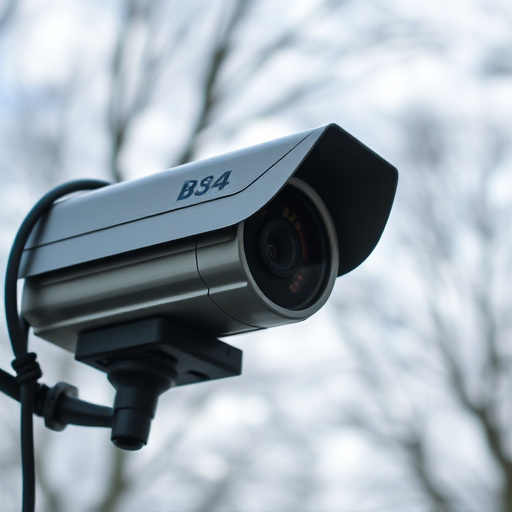Covert cameras, shrinking in size and enhancing capabilities with technology, blend seamlessly into everyday objects in home offices prioritizing privacy. With wireless connectivity, motion sensors, and two-way audio, they offer high-quality video streaming and automated alerts. Detecting them requires visual clue inspection, especially for unusual items or tampering signs. Electronic Countermeasures (ECMs), like signal jamming, disrupt camera signals but advanced cameras may use frequency-hopping. A robust prevention approach includes regular inspections, security systems, physical barriers, and staying updated on detection techniques to safeguard home offices from covert surveillance devices.
Uncover the insidious world of hidden monitoring devices and empower yourself with these essential detection tips. From understanding advanced covert camera technology used in today’s digital era to identifying subtle visual clues, this guide equips you to recognize potential threats in your home or office. Learn effective countermeasures and best practices to prevent surveillance, ensuring privacy and peace of mind in your personal spaces.
- Understanding Covert Camera Technology
- Identifying Visual Clues in Your Environment
- Using Electronic Countermeasures for Detection
- Best Practices for Preventing Hidden Surveillance
Understanding Covert Camera Technology
Covert cameras, also known as hidden cameras, have advanced significantly in recent years, becoming smaller, more sophisticated, and capable of delivering high-quality video footage. These cameras are designed to be placed discreetly in various locations, making them ideal for home offices where privacy is a primary concern. They can fit inside everyday objects like clocks, pen holders, or even smoke detectors, ensuring they go unnoticed. This technology leverages infrared lighting for night vision and motion sensors to activate recording only when necessary, enhancing efficiency and battery life.
Understanding how covert cameras work is crucial for effective monitoring. Many modern devices use wireless connections, such as Wi-Fi, allowing real-time video streaming to your smartphone or computer. Some models also offer two-way audio capabilities, enabling you to communicate with individuals in the monitored area. Additionally, advanced features like motion detection and automated alerts can notify you of any unusual activity in your home office, ensuring prompt action is taken when needed.
Identifying Visual Clues in Your Environment
When it comes to detecting hidden monitoring devices, such as covert cameras in your home office, understanding visual clues can be a powerful tool. Regularly inspect your surroundings for any unusual or out-of-place items. This could include small, compact objects like USB drives, which might double as camera components. Even subtle signs like an irregular reflection on a surface or a faint glow from an electronic device could indicate the presence of covert cameras.
Pay close attention to fixed furniture or objects that are positioned in odd angles or have recently been moved. Cameras often use tripods or similar mounts, so any unusual equipment or setup should raise your suspicion. Additionally, look for signs of tampering with power outlets or cables, as hidden cameras might require external power sources. By keeping an eagle eye on these visual cues, you can increase your chances of identifying and neutralizing covert surveillance devices in your home office space.
Using Electronic Countermeasures for Detection
In the ongoing battle against hidden monitoring devices, particularly covert cameras in home offices, Electronic Countermeasures (ECMs) emerge as a powerful tool for detection. These advanced technologies are designed to disrupt and mask electronic signals, making it easier to identify and neutralize hidden surveillance equipment. By employing ECMs, individuals can fortify their privacy by creating an environment that deters the use of covert cameras and other monitoring devices.
One effective approach within the realm of ECMs is signal jamming. This technique involves using specialized devices to interfere with or block specific frequencies used by covert cameras. However, it’s crucial to note that not all signals are easily jamminable, and advanced cameras might employ more sophisticated frequency-hopping techniques. Therefore, staying informed about the latest in ECM technology and tailoring these countermeasures to one’s specific needs is essential for effective protection against hidden cameras in home offices.
Best Practices for Preventing Hidden Surveillance
Preventing hidden surveillance, especially in your home office, is a multi-faceted approach combining awareness and technological measures. A crucial first step is regularly inspecting potential hiding spots. These could be behind pictures, clock radios, or even inside electrical outlets. Covert cameras are often cleverly disguised, so staying vigilant and keeping up with the latest detection techniques is essential.
Additionally, installing security systems designed to detect hidden cameras can serve as a robust defense. These systems use heat signatures, motion sensors, and advanced algorithms to identify unusual activity. Employing physical barriers like metal screens over outlets or using infrared cameras that visualize heat signatures can also deter would-be installers of covert cameras for your home office.
In today’s digital age, understanding and protecting against covert cameras is essential, especially in your home or office. By familiarizing yourself with advanced camera technologies and employing countermeasures, you can significantly reduce the risk of undetected surveillance. Remember, staying informed about these hidden monitoring devices and their detection techniques is a proactive step towards maintaining privacy and security in any environment.
